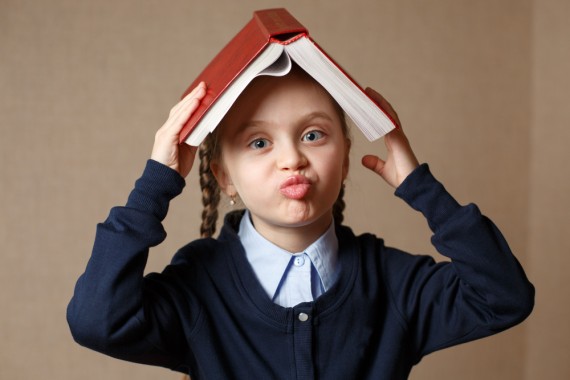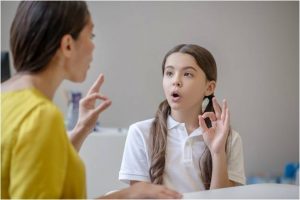Learning Techniques for Students
By Prapoorna M
Last Updated: November 25, 2021
Learning Techniques for Students are essential tools to help them succeed academically. As a student, you may be overwhelmed with the information you need to process, retain, and apply. However, with the proper techniques, you can make the learning process easier and more efficient. In this blog, we will explore some effective Learning Techniques for Students that can help you improve your academic performance. Whether you are a high school, college, or graduate student, these techniques can help you learn and retain information better, prepare for exams, and succeed in your academic pursuits. So, let’s dive into some of the most effective Learning Techniques for Students to help you achieve your educational goals.
Attention
Attention refers to how we actively process specific information in our environment. At this time, while you read this, there are numerous sights, sounds and sensations going on around you. They could be anything like the sight of the street out of a nearby window, the pressure of your feet against the floor, the soft warmth of your shirt, the memory of a conversation you had earlier with a friend etc. How do you manage to experience all of these sensations and still focus on just one element of your environment?
Think of attention as a highlighter. Just as you highlight a portion of the text while reading so as to focus on it, attention allows you to “tune out” information, sensations and perceptions that are not relevant at the moment and instead focus your energy on the information that is important.
Significant Things about Attention
Attention Is Limited; It is limited in terms of both capacity and duration.
Attention Is Selective
We always have to be choosy about what we decide to focus on, as attention is a limited resource. We are selective in what we attend to, a process that often occurs so quickly that we do not even notice.
Attention Is a Basic component of the Cognitive System
Attention is a basic part of our biology, present even at birth. Any stimulus that holds our attention inspires us to respond to our environment. You’re sitting in class and you suddenly find yourself daydreaming, losing focus, and not paying attention. So what can be done to improve your attention and to increase your focus by preventing your mind from wandering?
Learning
Learning can be termed as any relatively permanent change in behavior that occurs as a result of practice and experience.
Types of Techniques
Let us have a look at the types of learning. They are
1) Motor learning
Activities which involve the muscular coordination in our day-to-day life like walking, running, skating, driving, climbing, etc. refer to motor activities.
2) Verbal learning
The process involved in learning about verbal stimulants and reactions, like letters, numbers, Signs, pictures, symbols, words, figures, sounds, for communication.
3) Concept learning
It is the form of learning which requires higher order mental processes like thinking, reasoning, intelligence, etc. Concept learning involves abstraction and generalization and very useful in recognizing and identifying things.
4) Discrimination learning
Learning to differentiate between stimuli and showing an appropriate response to these stimuli. Example, sound horns of different vehicles like bus, car, ambulance, etc.
5) Learning of principles
Learning principles related to science, mathematics, grammar, etc. in order to manage work effectively. These principles always show the relationship between two or more concepts. Example: formulae, laws, associations, correlations, etc.
Laws that govern learning
The below laws govern the learning process.
The Law of effect
Responses that lead to satisfying consequences are strengthened and those are likely to be repeated. Responses that lead to unsatisfying consequences are weakened and unlikely to be repeated.
If putting up his hand in class gains a student the teacher’s attention and recognition, his behaviour has resulted in a satisfying state of affairs, and likely to repeat. These Learning techniques for students helps them to grasp more. On the other hand, if a student raises hand to attract teacher’s attention and the teacher does not recognize it, the student is less likely to repeat such behaviour.
The Law of readiness
Learner’s readiness is important in learning to engage in certain behaviour and when provided with an opportunity, the whole experience will be pleasing or satisfying one. If a person is forced to engage in certain behaviour for which he is not ready, the end result will be annoying.
The Law of exercise
A strong connection or bond is established between a stimulus and a response as a result of practice. Indeed as it is often said “practice makes perfect”, the more the skill or body of information is practiced the more it will be mastered, applied and retained in memory. For example, in primary schools it is a common practice for pupils to memorize multiplication tables. This practice applies the law of exercise.

Transfer of learning
Transfer of learning or training refers to carryover of skills of one learning to the other learning. Such transfer occurs when learning of one set of material influences the learning of another set of material later. For example, a person who knows to ride a bicycle can easily learn to drive a scooter.
Types of Transfer of Learning
There are three types of transfer of learning
Positive transfer
When learning in one situation facilitates learning in another situation, it can be termed as Positive learning. For example, Knowledge of mathematics facilitates to learn physics in a better way.
Negative transfer
When learning of one task makes the learning of another task harder, it can be termed as Negative transfer. For example, left hand drive vehicles hampering the learning of right hand drive.
Neutral/Zero transfer
When the learning of one activity neither facilitates nor hinders the learning of another task, it can be understood as Neutral or Zero transfer of learning. For example, having a good knowledge of mathematics has no effect on the learning of driving a car or a scooter.
In the same way, expecting children who are good at painting to be also good at studies is unrealistic.
Learning styles
It is known that different people learn differently and the learning technique differs from one another. Psychologists have attempted through the years to identify these traits of different types of learners to categorize them into different “learning styles.”
Visual Learning Style
As the name implies, people with a visual learning style absorb information by seeing it and storing the images in their brains. They often enjoy reading and have a good handwriting. They are very detail- oriented, organized and have a keen awareness of colors and shapes.
These people tend to struggle with verbal directions and are easily distracted by noise. They tend to remember the faces of people they meet, rather than their names. Such people often need to maintain eye contact with a person to concentrate on a conversation.
Study habits for visual learners
The study habits for the visual learners should be like the following in
order to be better learners.
- Note down the directions.
- Usage of visuals when teaching lessons, such as pictures, charts, diagrams, maps, and outlines will be helpful for them.
- Try to demonstrate the tasks physically.
- Use visual aids such as flashcards and blocks.
- Show the visual patterns in language to teach spelling, vocabulary, grammar, and punctuation.
- Organize the information you need to remember using color codes.
- Talk face-to-face and make eye contact whenever possible.
- When directions are given verbally, student should be encouraged to ask for clarification if she/he couldn’t understand completely.
- The student should be encouraged to write plenty of notes and organize information on paper and with objects.
- Provide a quiet, neat place to study, and minimize distractions as much as possible.
Auditory Learning Style
Verbal language is the major form for exchanging information for auditory learners. They learn best by hearing and speaking. Such people often talk more than the average person and are very social. They enjoy hearing stories and jokes, understand concepts by talking about them and may excel in music or in performing arts.
Some auditory learners read slowly and have trouble writing, struggle to follow written directions, and have a tough time staying quiet for long stretches of time. They remember names and recognize tone of voice well, than remembering people’s faces. They often hum or sing, and they may whisper to themselves while reading. These learning techniques helps them for their learning style.
Study habits for auditory learners
The study habits for auditory learners are like the below ones.
- They like to play word games and use rhymes to practice language.
- When you allow such child to read aloud, even when alone, he/she follows the text with finger.
- It would be beneficial to allow the child to explain concepts verbally and give oral reports.
- Have the child memorize information by repeating it aloud. As he/she says the information, child also hears himself/herself saying it. These two channels for language, speaking and hearing, help to embed the information in child’s memory.
- Assign projects and study times to be done in small and large groups.
- Read aloud often to young children.
- Provide a personal voice recorder (if allowed) the child can use to record notes or questions.
- Use beats, rhythms, and songs to reinforce educational information.
Kinesthetic Learning Style
Kinesthetic learners learn best by doing, moving around and handling physical objects. They like to explore the outdoors and are often very coordinated. Such students may also excel in athletics and performing arts. They usually tend to express their feelings physically, such as with hugging and hitting. More interestingly, they like to be independent, trying new skills for themselves rather than being given directions or shown a demonstration.
They may find it hard to sit still for long periods of time. They often struggle with reading and spelling. Kinesthetic learners are often considered “difficult” and misdiagnosed with ADHD (attention deficit hyperactivity disorder).
Study habits for kinesthetic learners
The study habits for kinesthetic learners should be like the below.
- As they cannot concentrate continuously, prefer to give breaks frequently.
- As they like, let them try something first, before you give detailed instructions.
- Always try to provide plenty of hands-on learning tools, such as blocks, puzzles, maps, crayons, modeling clay, science experiments, a geo board (a square board with pegs used to teach shapes and geometric concepts) and an abacus.
- The study space should not be limited to the usual desk. The child should be allowed to study while moving around, lying on the floor, or slouching in a couch.
- The outdoors can also be used for learning opportunities.
- Teach educational concepts through games and projects.
- Presentations can also be assigned to them, in which these children demonstrate concepts or skills.
- It’s better to encourage physical movement while studying. For example, quiz the child while taking a walk around the block.
- Always find a school with mandatory physical education. Kinesthetic learners suffer most from the recent cutting of P.E. in many schools.
Being a parent, you should encourage children to learn the way, they are. These learning techniques for students helps them in every aspect. In order to have an idea on the type of learning that your child does or to know how to deal with underachievement in children or their temperaments, don’t hesitate to consult an expert. Are you worried about their reducing grades or what their future will be? Our psychological experts are here to help you with child-parenting techniques and to guide you to know their real interests. Book an appointment to help them make a better future.
Conclusion:
In conclusion, Learning Techniques for Students are essential for academic success. By using active learning, spaced repetition, visual aids, and other techniques, students can make the learning process more effective and enjoyable. These techniques help students learn and retain information better but also help them develop critical thinking, problem-solving, and collaboration skills. By incorporating these Learning Techniques for Students into your academic routine, you can improve your grades, prepare for exams more effectively, and ultimately succeed in your academic pursuits. Remember, learning is a lifelong process, and the techniques you learn today will serve you well in the future. So, start implementing these Learning Techniques for Students into your daily routine and watch your academic performance soar!
FAQs for Learning Techniques for Students:
1. Why are learning techniques important for students?
- Learning techniques are crucial for students as they help them process, retain, and apply information effectively, making the learning process easier and more efficient.
2. Who can benefit from the learning techniques discussed in the text?
- These learning techniques are applicable to students at various educational levels, including high school, college, and graduate students.
3. What is the role of attention in learning?
- Attention allows individuals to focus on relevant information while filtering out distractions. It is essential for effective learning.
4. What are the different types of learning discussed in the text?
- The text mentions various types of learning, including motor learning, verbal learning, concept learning, discrimination learning, and learning of principles.
5. What are the laws that govern the learning process according to the text?
- The text mentions three laws governing the learning process: the Law of effect, the Law of readiness, and the Law of exercise.
6. What is transfer of learning, and what are its types?
- Transfer of learning refers to the carryover of skills or knowledge from one learning context to another. There are three types: positive transfer, negative transfer, and neutral/zero transfer.
7. What are the different learning styles discussed in the text?
- The text describes three primary learning styles: visual learning style, auditory learning style, and kinesthetic learning style.
8. How can visual learners enhance their study habits?
- Visual learners can improve their study habits by using visual aids, color coding, taking notes, and maintaining eye contact during conversations, among other strategies.
9. What are some study habits recommended for auditory learners?
- Auditory learners can benefit from reading aloud, explaining concepts verbally, using voice recorders, and incorporating beats, rhythms, and songs into their learning.
10. How can kinesthetic learners adapt their study habits to their learning style?
Kinesthetic learners can enhance their study habits by incorporating hands-on activities, allowing for movement while studying, and encouraging physical movement during learning sessions.
11. Where can I seek expert advice on understanding my child’s learning style and addressing any learning-related concerns?
You can consult with psychological experts to identify your child’s learning style and receive guidance on parenting techniques and understanding their interests. An appointment can be booked for assistance.
12. What is the key takeaway from the text regarding learning techniques for students?
The key takeaway is that implementing effective learning techniques, such as active learning and using various strategies tailored to one’s learning style, can significantly improve academic performance and skills essential for success in education and beyond.
About the Author:
Prapoorna Mangalampalli, Psychologist
Prapoorna, an author with dual master’s degrees in Psychology and English, excels in exploring and enhancing human experiences. Her writing, characterized by deep empathy and insight, primarily focuses on the complexities of counseling, spanning areas such as online, marital, relationship, child, family, and career counseling. Specialized training in various counseling sectors underscores her dedication to positive change. In her blogs, Prapoorna offers valuable guidance and a unique perspective for parents of children with Autism and special needs, creating a supportive community in this realm.
Book your Free Consultation Today
Parent/Caregiver Info:
Client’s Details:
* Error Message








